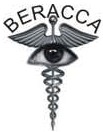Blue light is part of the visible light spectrum and consists of wavelengths between 380nm to 500 nm. It produces high amount of energy. Blue light is everywhere around us.

Sources of blue light include:
- Sunlight
- Laptops and personal computers
- Fluorescent light
- Digital screens
- Tablets
- Smart phones
- LED television
- LED and energy saving bulbs.
- The cooler the light, the more the blue light it emits.

There are two types of blue light: the beneficial and harmful blue light.
BENEFITS OF BLUE LIGHT
Blue-turquoise range of blue light is beneficial for visual function and general health in the following ways:
- It regulates the circadian rhythm which is the body’s natural clock. This regulates sleep and wake cycle
- Boosts alertness
- Helps memory and cognitive function
- Elevates mood
- Helps in hormonal balance
- Helps in visual acuity and contrast sensitivity
- Helps preserve colour perception
INCREASE IN BLUE LIGHT EXPOSURE
Over the years there has been a tremendous increase in use on dependence on digital devices in our every day lives. This further increased with the COVID 19 pandemic and its resultant social distancing. A lot of businesses, work, school became virtual. E commerce, E meetings, E learning became the norm.
Concern over the long-term effects of screen exposure is because of its proximity to the eyes. Children are more at risk because their lens is very transparent and cannot filter blue light.
In today’s digital world, we are bombarded by blue light from both natural and man-made sources. Research suggests that this cumulative and constant exposure to blue light can damage retinal cells.
HARMFUL BLUE LIGHT
The blue-violet spectrum is harmful to the eyes and general health in the following ways:
- Computer vision syndrome
- Disruption of the circadian rhythm
- Greater risk of certain types of cancer
- Greater risk of diabetes, heart disease and obesity
- Increased risk of depression
DISRUPTION OF THE CIRCADIAN RHYTHM
Blue light affects the production and release of melatonin which is the body’s natural clock from the pineal glands. Melatonin levels begin to increase approximately 2 hours before sleep hence the need to limit use of digital devices at night. Blue light is melatonin’s worst enemy.
EFFECTS ON THE EYE
Blue light has been identified as the most dangerous light for the retina.
- It increases the risk and onset of age related macula degeneration (ARMD)
- It damages the retinal pigment epithelium and the photoreceptors
- It damages the macula pigments (lutein and zeaxanthin) which are the defence/ repair systems of the eye
FACTS ABOUT TODAY’S DIGITAL LIFESTYLE

1 in 4 children spend more than 3 hours each day on digital devices.

33% of adults spend more than 9 hours on digital devices each day.

72% of adults are unaware of the dangers of blue light. On the average, people look at their mobile devices more than 100 times in a day.
BREAKTHROUGH DISCOVERY- LASTING PROTECTION FOR THE EYES
In a bid to mitigate the effects of blue light on the eyes, lenses have been discovered which can help prevent the effects of the blue light emitted by these devices on the eye. These lenses
- Selectively filters out harmful blue-turquoise light
- Allows beneficail light including blue-turquoise light to pass through
- Maintain excellence transparency
- Enhance colour perception
- Anti-reflective properties for optimal vision at all times.
HOW TO PROTECT YOUR EYES FROM BLUE LIGHT DAMAGE
- effort should be made to cut back on time spent in front of the screen especially at night . This will ensure better sleep at night hence more productivity at work and in school
- Consumption of food rich in lutein and zeaxanthin as well as supplements will help protect the macular from harmful effects of blue light. These include green leafy vegetables, egg yolk etc
- Use of blue light filtering lenses. Your eye care provider will advise on the best options for you.
